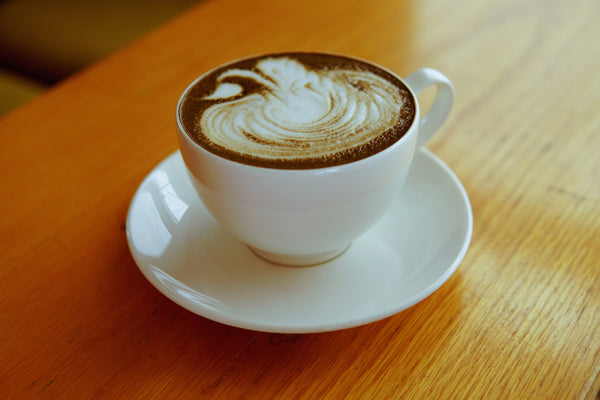Hojicha may not be a familiar term to you, but it is well known in Japan where tea is part of the culture. This smoky, sweet, soothing tea is often brewed in tea shops to attract customers by the smell alone, but it is also popular for its unique, mild flavor and chocolatey appearance too. Let’s get to know Hojicha, or roasted green tea, better.

Green Tea
Green tea comes in many different forms and grades, all coming down to how the leaves were grown and prepared. Matcha is considered one of the best forms, grown under shade to preserve tenderness and flavor. Ceremonial is matcha’s highest grade, the tenderest leaves picked early in spring by hand. But there are many more types of green teas that are grown under shade, in full sun, steamed, dried, rolled, and more. Despite the darker, richer colors, Hojicha is still considered green tea as it is derived from the same leaves, with only one added step to transform it into something new. It has different forms and grades to.
Grades & Types
The type of Hojicha you end up with depends on the type of green tea you roast. You can roast whole leaves, stems, twigs, and even tea powder. You can begin with early harvests or later harvests. You can choose leaves grown under shade or in full sun. The higher quality the first product, the better the Hojicha. Ujido starts with high culinary matcha, making one of the finest Hojichas on the planet.
Flavor
Green tea’s flavor is influenced by how it is grown, when it is harvested, and how it is prepared. The more sun exposure leaves have, the more tannins develop. The longer tea is grown, the more bitter and tough the leaves become. Roasting, though, breaks down tannins. This can turn even the bitterest of teas into something far sweeter. Hojicha has a mild, smoky, sweet flavor all its own, with less caffeine than its source. Matcha already has fewer tannins than other types of green tea. Shade and early harvests keep the catechins (antioxidants) in the leaves from converting to tannins. Matcha Hojicha is something special. Expect extra rich, warm, and soothing.
Color
The hue varies, depending on the type of leaves used, but Hojicha tends to have a chocolatey brown color with hints of red. The dark and bright greens of matcha make for a brighter Hojicha too. It makes a beautiful latte.
Aroma
We’ve already mentioned that tea shops use Hojicha to lure in customers. It has a rich, smoky scent with much more depth than the vegetable or grassy aromas of green tea and matcha.
Caffeine
Along with tannins, roasting breaks down caffeine. This makes Hojicha a milder tea, with less half the caffeine in matcha, but it still provides a slight kick to your energy levels. Being made from matcha also gives Hojicha extra L-Theanine, an amino acid that provides focus, clarity, and a sense of well-being. This all makes Hojicha a great tea or latte for later in the day.
Easy Prep
Hojicha powder can be made the same way you make matcha. Simply whisk it into hot water. Add more hot water to make it a tea, pour it over ice for an iced Hojicha, or pour it over your favorite type of milk or cream to make a latte. It has a slight sweetness, but you can add sweeteners as you like too. Hojicha can also be used in baking and cooking. Try it in a rub or marinade, mix it into an icing, or bake it into a cupcake or cookie. It even makes a great ice cream flavor. The options are almost endless.
Don’t be afraid to try something new. Our Roasted Matcha or Hojicha can be found here.




